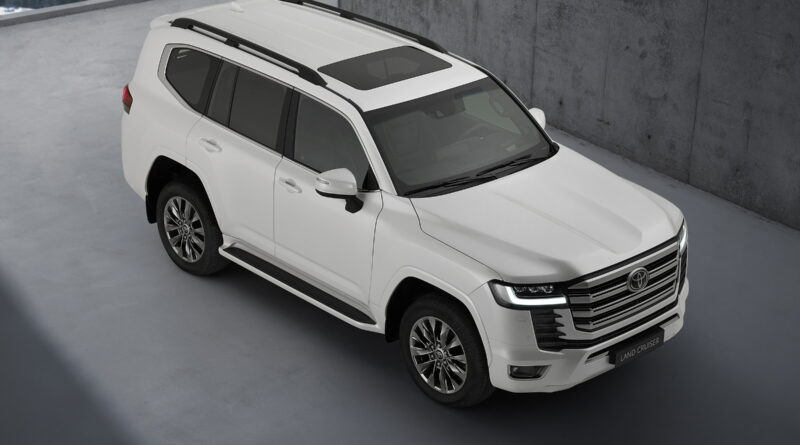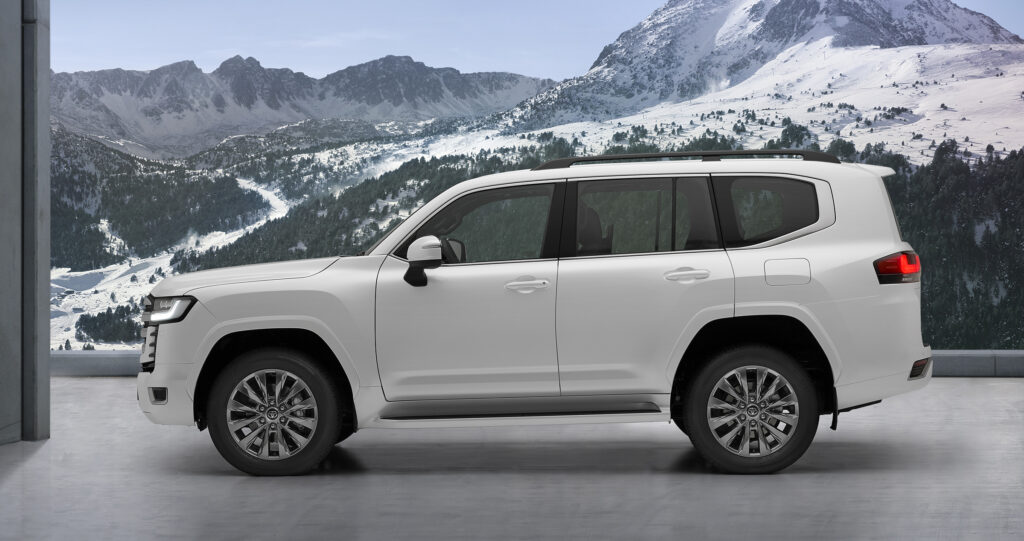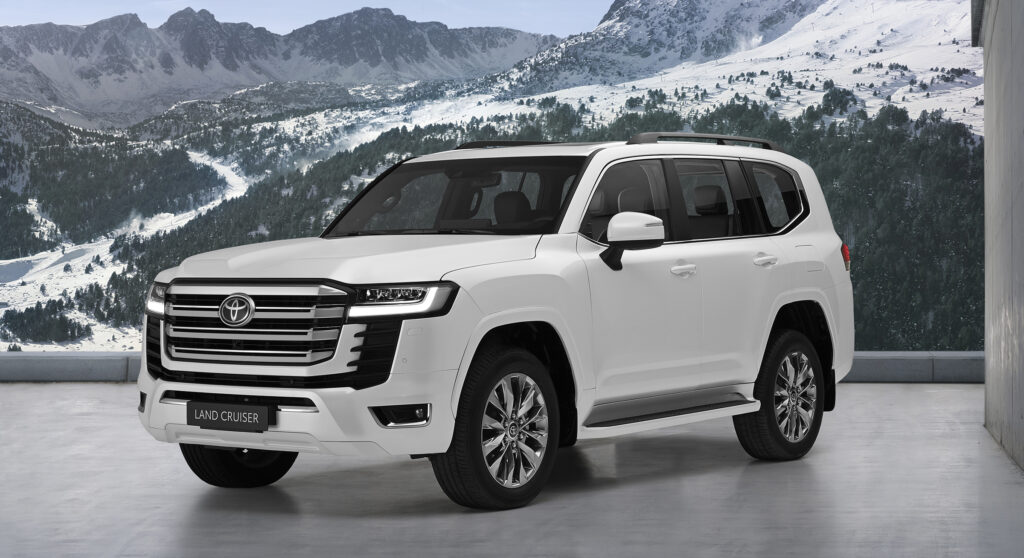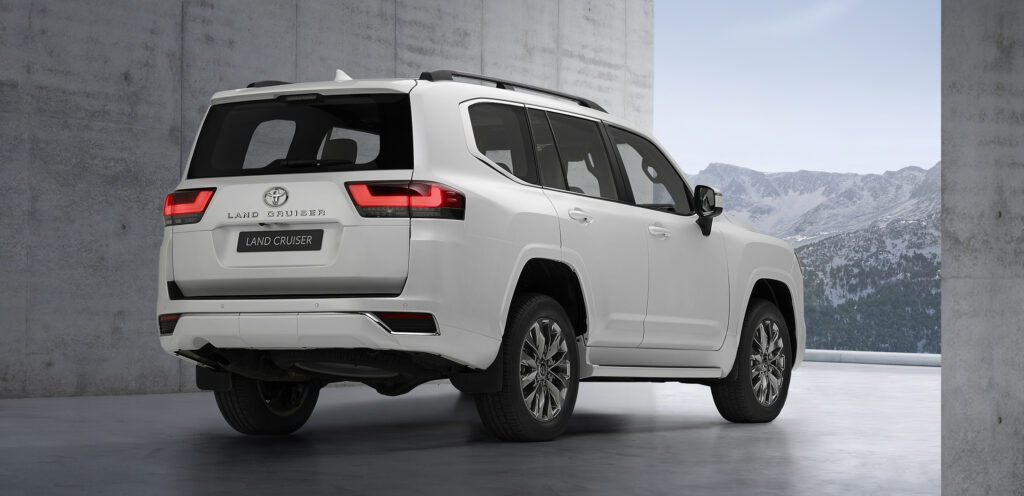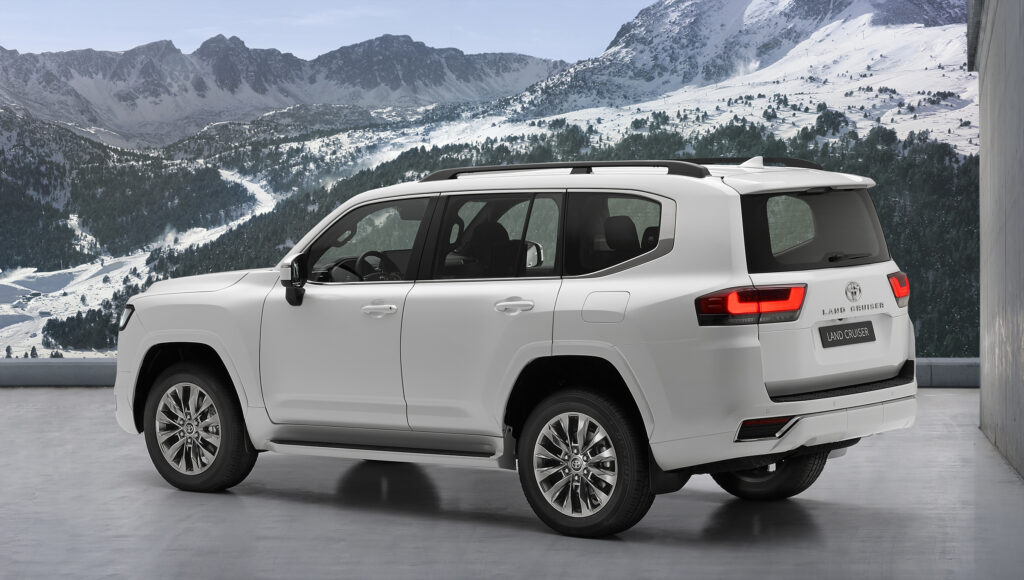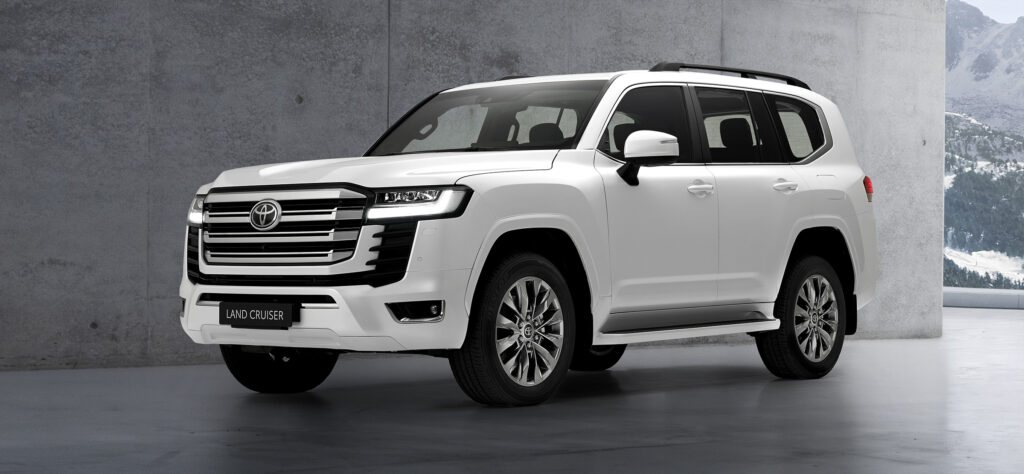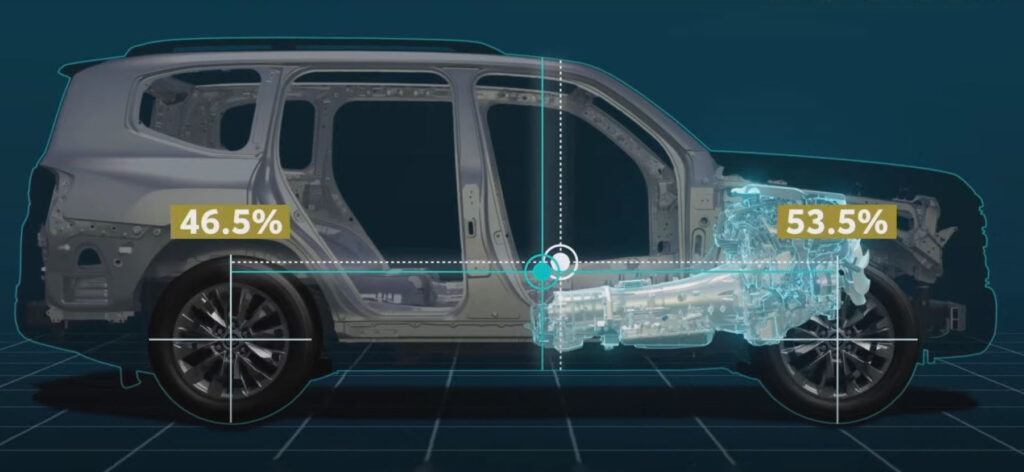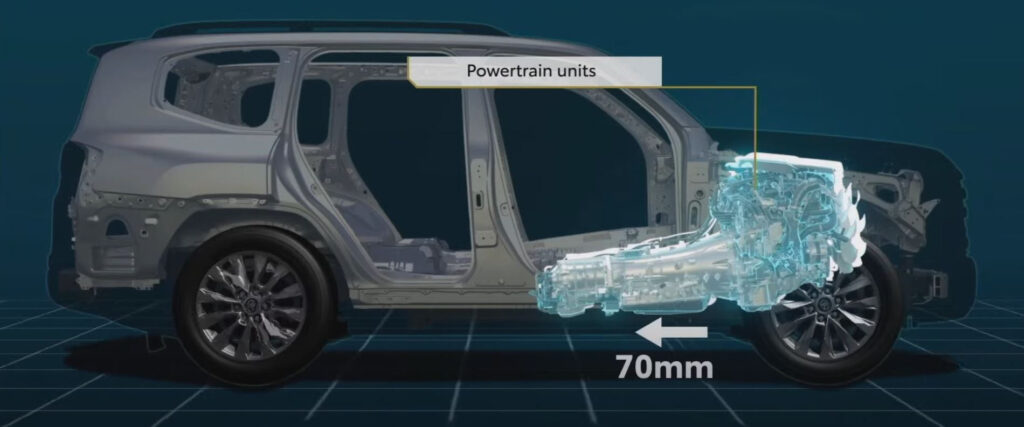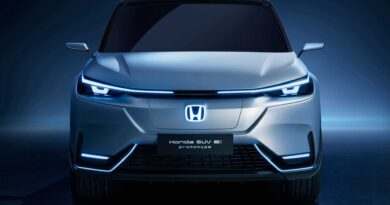LandCruiser 300-Series: Diesel now, but electrification coming
Meet the Toyota LandCruiser that will one day come with a hybrid and/or electric drivetrain.
After months of online leaks and rumours, the all-new LandCruiser 300-Series unveiled in the Middle East overnight has set the foundations for an off-roader that will be powered partially or wholly by electricity over coming years.
Toyota Australia has committed to a hybrid or electric model of most vehicles in its range (GR models such as the 86 and Supra sports cars are excluded) by 2030.
Want the latest EV news and reviews delivered to your inbox? Subscribe to our weekly newsletter!
Given the life of a LandCruiser is typically 10 years-plus – the outgoing 200-Series was released in 2007 – it means the 300-Series will one day adopt electrification, although as Toyota Australia has previously indicated, it’s unlikely to happen in the next few years.
READ MORE: LandCruiser 70-Series electric in the works
READ MORE: Electric LandCruiser 70-Series program to expand
READ MORE: Hybrid LandCruisers still years away
READ MORE: Hydrogen fuel cell ‘suitable technology’ for LandCruiser
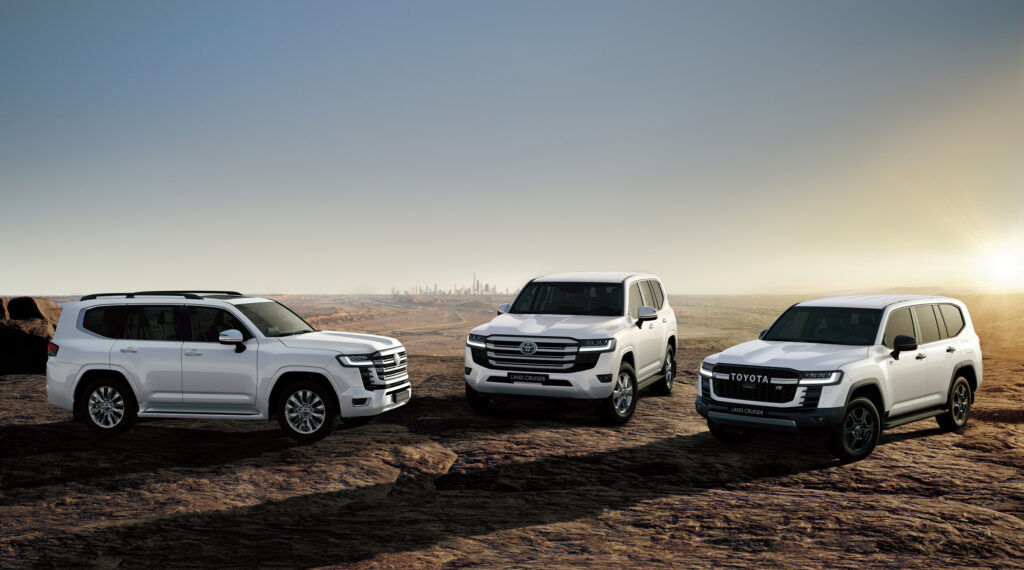
For now, the LandCruiser 300-Series has the choice of two new V6 engines: a 3.5-litre twin-turbo V6 petrol or a 3.3-litre twin-turbo diesel engine, the latter the option slated to come to Australia.
Both V6s produce more power and torque than the V8 engines they’ll replace, allaying fears the move to smaller capacity engines would result in less grunt.

In the case of the diesel, it makes 227kW and 700Nm, which is 13.5 percent more power and 7.7 percent more torque than the 4.5-litre twin-turbo V8 it replaces.
“The new LandCruiser range brings improved design and advanced new technologies that advance its performance in all conditions while enhancing its comfort, convenience and safety as a luxury vehicle,” said Sean Hanley, Toyota Australia vice president sales, marketing and franchise operations.
“It is an indispensable tool that supports our customers lives and livelihoods by enabling them to travel almost anywhere – and return – in safety and comfort.”
New LandCruiser: Same, same, but better
The new 300-Series LandCruiser doesn’t mess with a well-proven formula that was honed into the 200-Series in 2007.
While the new model is all new under the skin, it is very much a styling evolution of the popular 200-Series that went on sale in 2007.
The basic shape is remarkably similar to the 200-Series, right down to the silhouette and the scallop that runs the length of the bonnet. It also has the same wheelbase and is about the same size, although exact dimensions haven’t been released yet.
But Toyota says the new car is about 200kg lighter – as reported it’s expected to have some aluminium panels – bringing the overall weight down to around 2.5 tonnes.
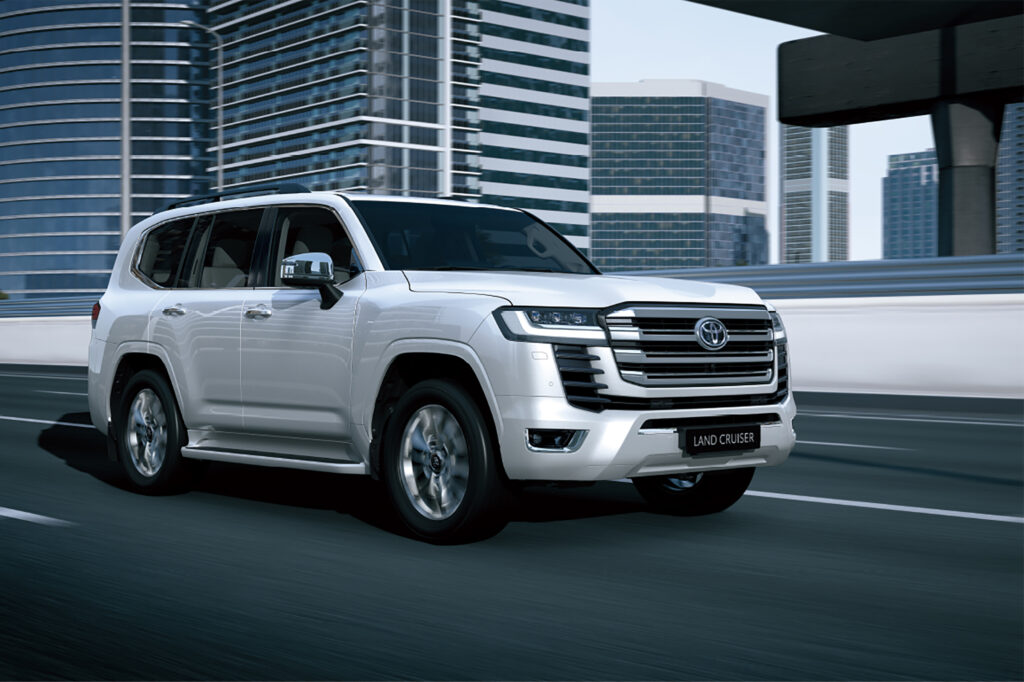
A large horizontal grille is flanked by slimmer headlights that have been positioned higher on the vehicle to reduce the chance of damage off-road; they’ll also likely get less damage from kangaroo strikes.
However, the LandCruiser is set to go slightly sporty.
In revealing the car overnight, the company showed off a GR Sport version, which has a distinctive black grille and unique front bumper, as well as black highlights for the mirrors and wheel arch surrounds.
Presumably that GR LandCruiser will also get suspension revisions and/or improvements to its off-road ability.
Inside, the LandCruiser 300-Series will still get three rows of seats, although the only image Toyota has shown so far is of a seven-seat layout; the current 200-Series LandCruiser can also be had as an eight-seater.
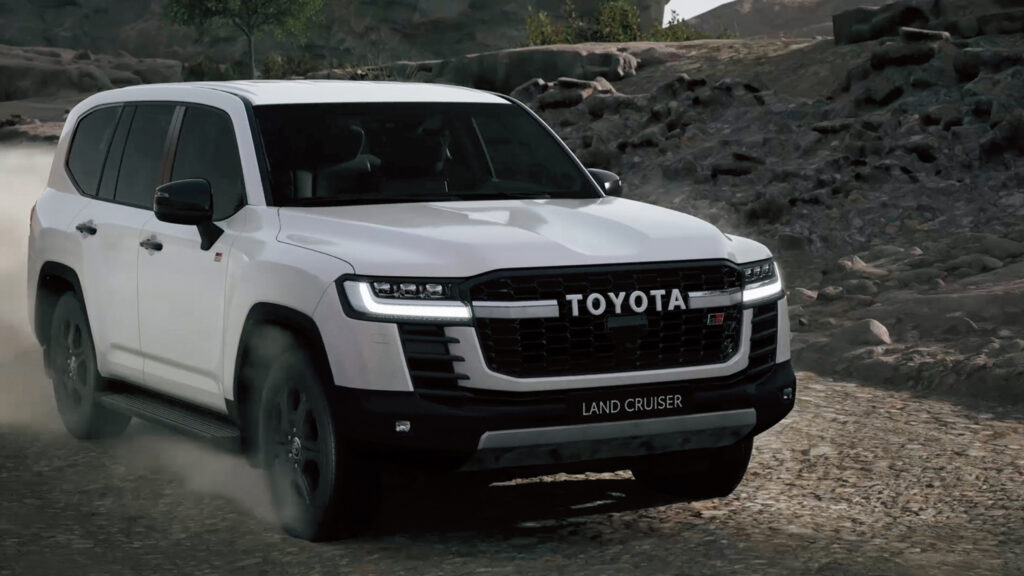
Buttons have replaced dials for some of the ventilation and infotainment controls and there is a large infotainment screen high on the dash.
Technology helping off-road
Tradition is key to any LandCruiser, part of the reason the new 300-Series still sits on a ladder frame chassis and gets a live rear axle to go with an independent front suspension setup.
But Toyota also sneaks technology into the mix when it makes sense, something we saw with the arrival of the 200-Series (it introduced a turn assist feature that could temporarily lock the inside rear wheel to tighten turns when off-roading).
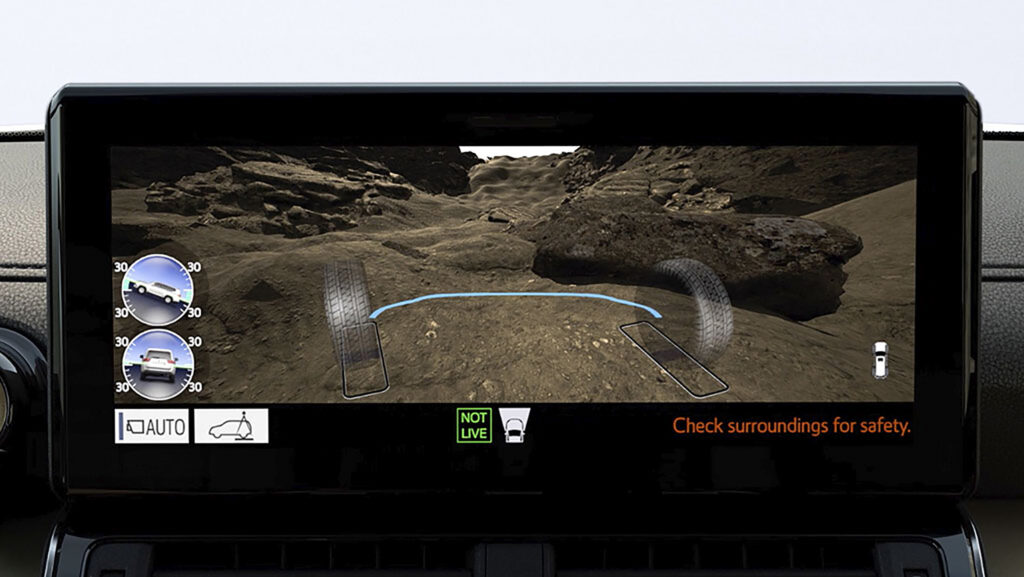
No surprises, then, that the 300-Series will step up the technology.
A new Multi-Terrain Monitor appears to provide the driver with a virtual view of what’s happening underneath the car, allowing the driver to better position wheels over challenging terrain.
There’s also a new Multi-Terrain Select system that is claimed to automatically detect the road surface and tailor things such as engine response and traction management systems to the conditions.
Electricity to improve 300-Series off-road cred
Toyota says the new LandCruiser will be the most capable yet.
Improved wheel articulation (the ability for the wheels to move up and down within the arches) and a new electronic KDSS (Kinetic Dynamic Suspension System) are key to improving its ability.
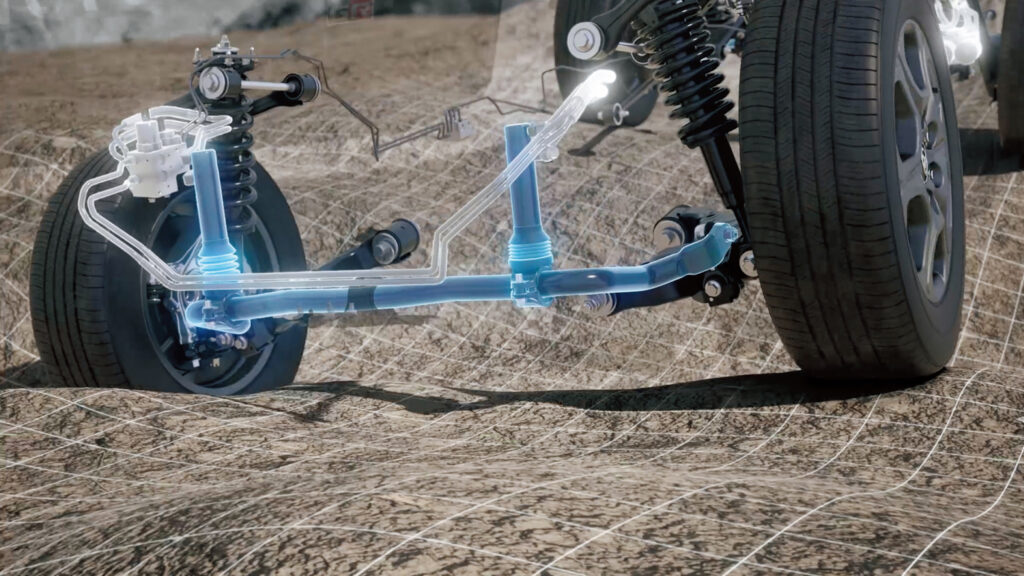
But in developing the new model Toyota made a frank admission: the two previous generation Cruisers (100-Series and 200-Series) were not as capable as the 80-Series that preceded them in the 1990s.
Chief engineer Takami Yokoo said the 80-Series LandCruiser “has the best rough road performance of any LandCruiser” and that the goal was to improve on that.
While Toyota says that’s been achieved with the 300-Series, electric motors could take it further.
Electric motors would not only provide additional grunt for a car that markets itself on grunt but also provide additional benefits in rough terrain.
Manufacturers of off-roaders have long said electrification promises to improve the 4WD breed, in part because of the benefits in controlling wheelspin.
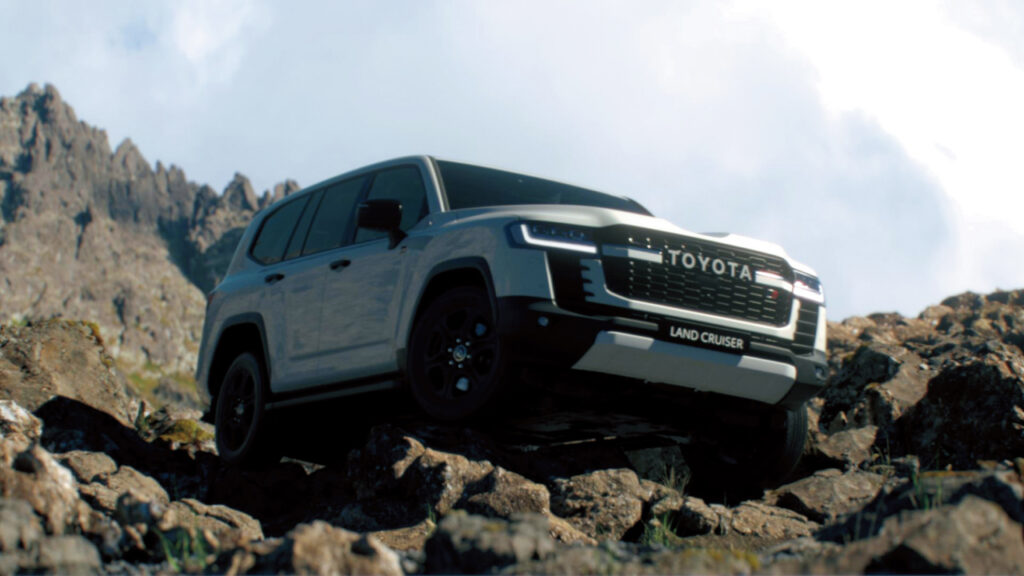
Electric motors can very quickly control torque to wheels individually, in turn smoothing wheelspin and maximising traction. Instead of wheels pulsing as traction control systems grab and release brakes – or cut fuel to the engine – the electric motors can almost instantly adjust how much torque is being sent around the car.
300-Series LandCruiser: Hybrid, PHEV, EV or FCEV?
The big question is what form hybrid or electric LandCruisers will take.
Toyota is taking its time, in part to ensure the reliability and ruggedness LandCruisers are known for. Much of the online presentation for the new Cruiser focused on its ability to not only get you there but get you back safely (yep, it’s a very, very big deal for Toyota).
Toyota hasn’t ruled out a diesel hybrid system, but a more conventional petrol-hybrid system makes more sense globally.
Other than Australia, the biggest markets for the LandCruiser are America, the Middle East and Russia – each of which favours petrol over diesel, even for large off-roaders.
So if – or, more likely, when – the LandCruiser goes hybrid, it seems logical to be team it to a petrol engine, as Toyota has so far done with all its hybrids.
That said, Toyota has long said it is considering a diesel hybrid, and there are reports suggestions Toyota is considering a diesel hybrid system for its 300-Series LandCruiser.
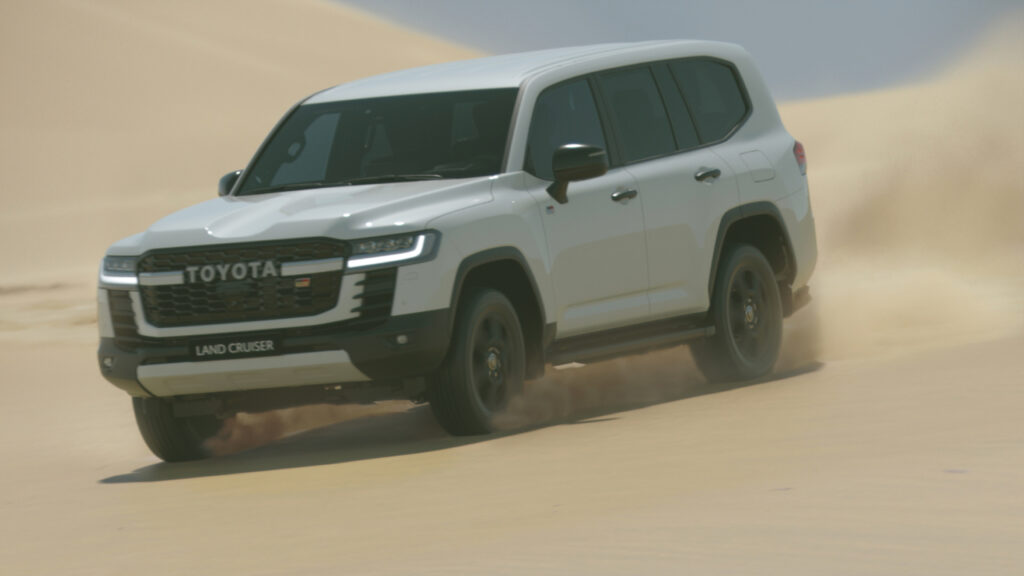
Toyota’s existing hybrid all-wheel drive models – including RAV4 and Kluger – currently utilise three electric motors. One is used to recharge the batteries through regenerative braking, another to drive the front wheels by assisting the petrol engine and the third to drive the rear wheels.
It’s uncertain whether Toyota would rely on a similar setup for its proper off-roaders, although given there is already a driveshaft running to the rear of the car it seems unlikely. The more likely scenario would be to provide electric assistance both front and rear while allowing an ICE to drive all four wheels.
Now, onto PHEV…
If we were guessing, a plug-in hybrid LandCruiser is highly unlikely, mainly because the additional weight of a larger battery pack would make life tough for engineers.
Plus those core markets for the LandCruiser aren’t biggies for PHEVs.
Similarly, a pure battery electric vehicle (BEV, or EV) seems to make less sense, again because of weight and issues with how far it would travel on a charge.
That said, Toyota is already working on a BEV version of the more utilitarian LandCruiser 70-Series. But that’s for specific applications, predominantly with Australian mining companies that typically don’t do big kilometres each day.
A more likely longer term zero-emissions scenario seems to be hydrogen fuel cell.
Toyota is already working hard on FCEV tech and has started selling the Mirai in Australia.
Toyota admits FCEV tech is well suited to large off-roaders and vehicles that tow, such as the LandCruiser; like the 200-Series, the new 300-Series has a 3500kg tow capacity. That’s why we’ve previously suggested a hydrogen-powered LandCruiser is a matter of when not if.
FCEV tech also has advantages with weight, which is a consideration for the LandCruiser, which typically aims to have a driving range north of 1000km. Any time you’re packing a car with batteries it tends to beef up.
It’s less of an issue with fuel cells, which use carbon-fibre fuel tanks and only carry about 5-10kg of hydrogen. But the fuel cell and associated hardware adds up, and FCEVs still use a small battery pack.
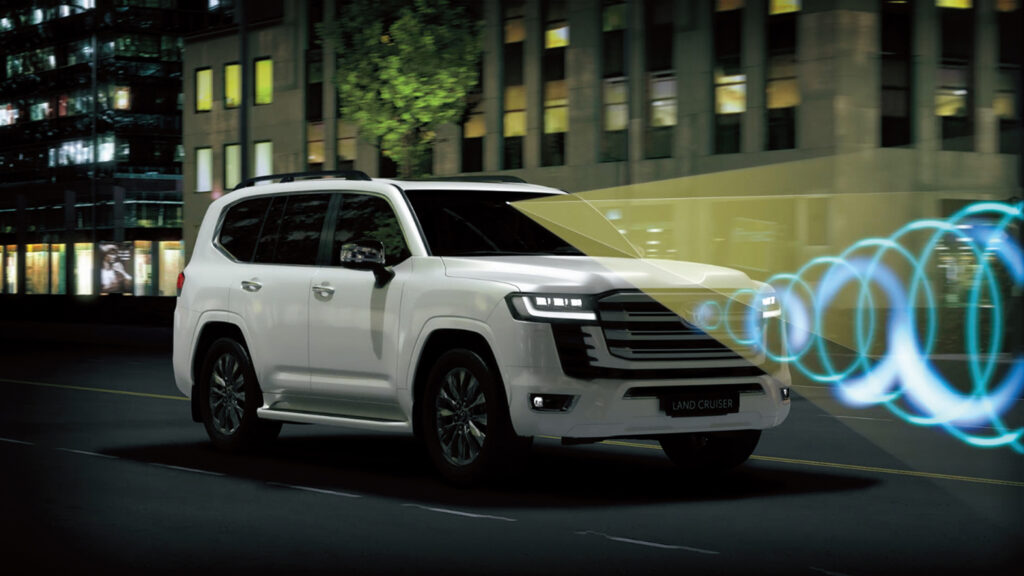
One example is the Toyota Mirai, which is about the size of a Camry but weighs around 300kg more, at 1.9 tonnes.
However, by far the biggest challenge with hydrogen today is a lack of refuelling infrastructure. There’s a single station in Canberra and one at a Toyota facility in Melbourne.
But there’s work being done on that and it would likely be many years before a LandCruiser FCEV would break cover.
So, to summarise, we reckon a regular hybrid LandCruiser is as close to an odds-on-bet as you can get, while a PHEV is maybe 20 percent at best.
Similarly, an EV LandCruiser we’d put at about 30 percent, whereas a FCEV LandCruiser would be more like an 85 percent chance of happening within the decade.
Diesel for now: new architecture primed for batteries
For now, Toyota has only showed the LandCruiser 300-Series – or LC300 – with two V6 engines.
A 305kW/650Nm 3.5-litre V6 twin-turbo petrol engine is likely to be popular in markets such as America and the Middle East, while the 227kW/700Nm 3.3-litre V6 twin-turbo diesel will be the weapon of choice for Australia.
Each is hooked up to a 10-speed automatic, which promises to further improve performance with a tighter spread of gear ratios.

They sit within a new ladder frame architecture that Toyota dubs TNGA-F, for Toyota New Global Architecture, with the F presumably denoting “frame”.
That architecture includes advanced welding and assembly techniques claimed to improve torsional rigidity while contributing to weight reductions.
But that architecture has also likely been designed to take the hardware – batteries, motors and, possibly, hydrogen fuel tanks – for electrified models in future.
The positioning of key drivetrain components has also been improved.
Toyota lowered the engine and transmission by 28mm and moved them rearward 70mm to lower the centre of gravity and improve weight distribution; the new LandCruiser has 53.5 percent of its weight over the front wheels and 46.5 percent over the rears.
The addition of batteries and e-motors would likely further improve that weight distribution.

